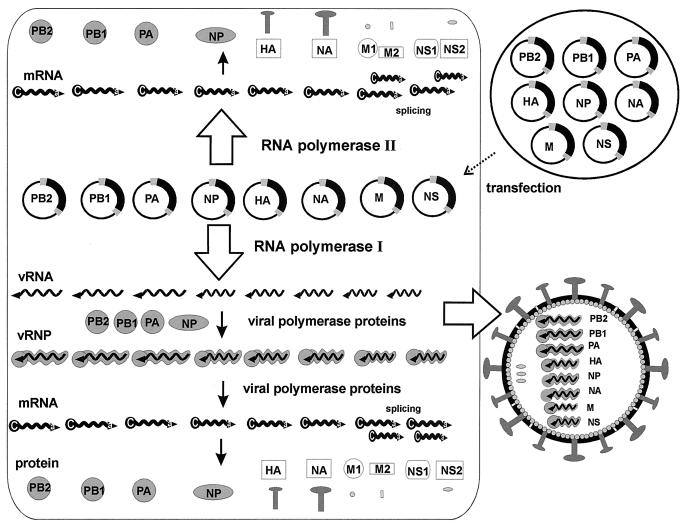Figure 2.
The eight-plasmid pol I–pol II system for the generation of influenza A virus. Eight expression plasmids containing the eight viral cDNAs inserted between the human pol I promoter and the pol II promoter (see Fig. 1) are transfected into eukaryotic cells. Because each plasmid contains two different promoters, both cellular pol I and pol II will transcribe the plasmid template, presumably in different nuclear compartments, which will result in the synthesis of viral mRNAs and vRNAs. After synthesis of the viral polymerase complex proteins (PB1, PB2, PA, nucleoproteins), the viral replication cycle is initiated. Ultimately, the assembly of all viral molecules directly (pol II transcription) or indirectly (pol I transcription and viral replication) derived from the cellular transcription and translation machinery results in the interaction of all synthesized molecules (vRNPs and the structural proteins HA, NA, M1, M2, NS2/NEP) to generate infectious influenza A virus.

